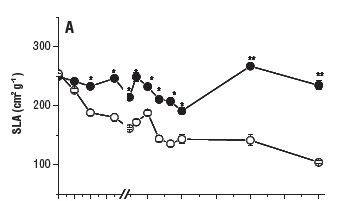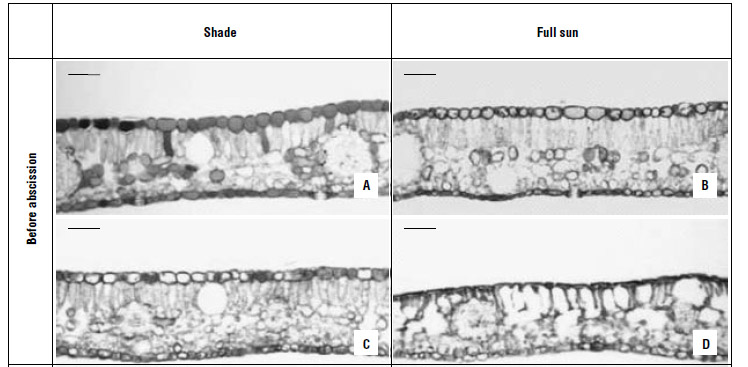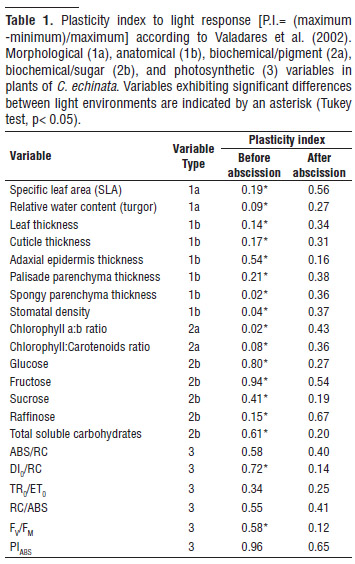This study aimed to characterize the alarm and resistance phases of stress of Caesalpinia echinata under intense irradiance in order to better define its position on forest succession. The alarm phase was identified by rapid reduction in the maximum quantum yield of PSII primary photochemical reactions (ΦP0 = FV/FM) and Performance Index (PIABS) followed by total leaf abscission in the first week of exposure to direct sunlight. The new leaves grown showed recovery of chlorophyll a parameters, increase in blade thickness, elongation of the palisade and spongy parenchymas, higher water content, and reduction of specific leaf area. These changes were associated with the osmoprotector of sucrose and antioxidative of raffinose effects, which indicate an efficient adjustment system to intense irradiance in the resistance phase of stress. However, the continuous decrease in photosynthetic pigments in the resistance phase combined with the photodamage in the fluorescence of Chl a and total abscission of leaves in the alarm phase are strong indications that C. echinata is a shade and late or climax species in forest succession.
forest succession; light stress; photoinhibition; leaf anatomy; soluble carbohydrates













